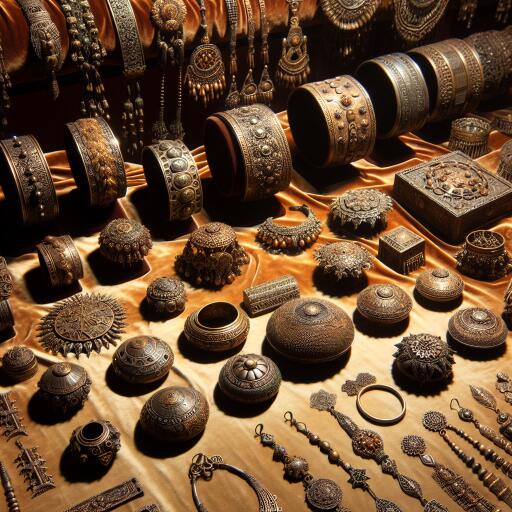Bronze Jewellery of Gopalganj Achieves GI Product Status
The traditional craft of making bronze jewellery in Gopalganj has been officially recognized as a Geographical Indication (GI) product, marking a significant milestone for the district’s cultural heritage and its artisans. This recognition positions Gopalganj’s bronze jewellery alongside its previously recognized GI product, the delectable Rosogolla, enhancing the district’s reputation for outstanding traditional products.
The Deputy Commissioner of Gopalganj, Kazi Mahbubul Alam, shared the news, highlighting the role of the Department of Patents, Industrial Designs and Trademarks under the Ministry of Industries. The official registration was announced in a journal published in accordance with the Geographical Indication of Goods (Registration and Protection) Act, 2013, securing Gopalganj’s bronze jewellery its deserved place among the nation’s recognized GI products.
This coveted status is not only a testament to the region’s rich craft tradition but is also anticipated to bolster the local and international standing of Jalirpar union’s bronze jewellery. The Deputy Commissioner expressed optimism that this recognition would facilitate economic development, generate employment, and improve the living standards of the local artisans devoted to this craft.
The journey towards achieving GI recognition began earnestly on March 12, with the district administration formally applying for the status, emphasizing the century-old heritage of bronze jewellery making in Jalirpar union, Muksudpur upazila. The recognition promises to elevate the tradition, historically confined to national recognition, to global fame.
Businessman Subhash Baidya, with deep ties to the bronze market in Jalirpar, recounted the craftsmanship’s evolution, which spans about a century. Initially a local tradition, bronze jewellery making has become a significant part of Jalirpar union’s identity, renowned throughout the nation and even seeping into international markets. Despite facing stiff competition from foreign markets, which have captured approximately 50% of the local market share, the tradition has persevered, supporting hundreds of families and maintaining a vibrant marketplace within the community.
There are presently 45 shops within Jalirpar union’s bronze market, underpinning the local economy and acting as custodians of this traditional craft. Artisan Jagdish Sheel from Jalirpar village voiced the craftsmen’s aspirations for government support. He emphasized the need for modernization, training, and broader support to ensure the tradition not only perseveres but thrives, contributing significantly to the country’s economy.
The GI recognition of Gopalganj’s bronze jewellery is a step towards acknowledging and preserving the cultural heritage of Bangladesh. It underscores the importance of sustaining traditional crafts and signifies the potential for such traditions to contribute to economic growth and development. As the focus now turns towards modernizing and promoting this industry, there is renewed hope for the future of bronze jewellery making in Gopalganj, ensuring its legacy for generations to come.
